DETROIT — United Auto Workers President Shawn Fain said on Friday the union had received fresh contract offers from GM and Stellantis in the past 24 hours and all three Detroit automakers had converged on a 23% wage hike, but “there is more to be won.”
“”We’re striking the Big Three like we’ve never struck before,” Fain said.
He added that there was “serious movement at Stellantis and GM” but that “these extremely profitable companies have more to give.”
Fain acknowledged some union members want to vote on the offers the union bargainers have in hand. He urged UAW members not to give in to what he called “fear, uncertainty, doubt and division” sowed by the companies.
He concluded his presentation saying, “Time is on our side, the American public is on our side, and the facts are on our side.”
The union had said earlier on Friday it would update members on bargaining after a week of “intensive negotiations” with the big three.
Five weeks into a strike, General Motors said on Friday it was raising its offer to striking autoworkers, matching Ford’s previously proposed 23% wage hike and other benefit improvements. Chrysler-parent Stellantis is also raising its wage offer to match GM and Ford, Bloomberg News reported.
“We have made substantial movement in all key areas in an effort to reach a final agreement with the UAW and get our people back to work,” GM said in a statement earlier on Friday.
“The majority of our workforce will make $40.39 per hour, or roughly $84,000 a year by the end of this agreement’s term,” it said.
Shares in GM and Ford both closed up about 1% on Friday.
Providing unusual detail into the negotiations, Fain presented a series of slides showing the current status with each automaker:
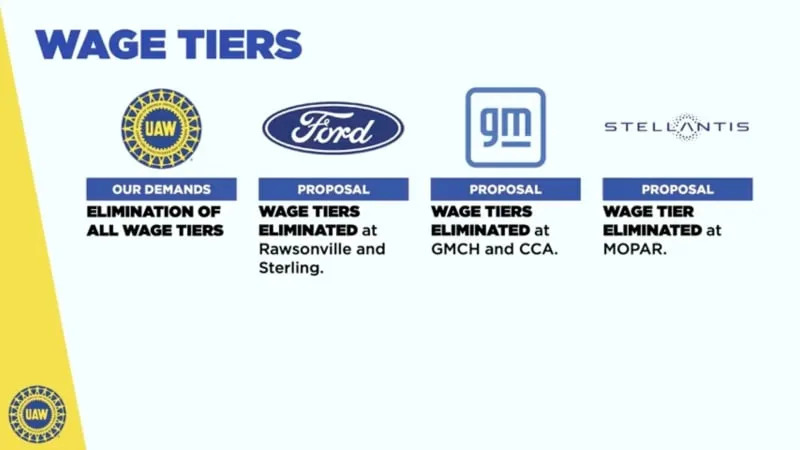
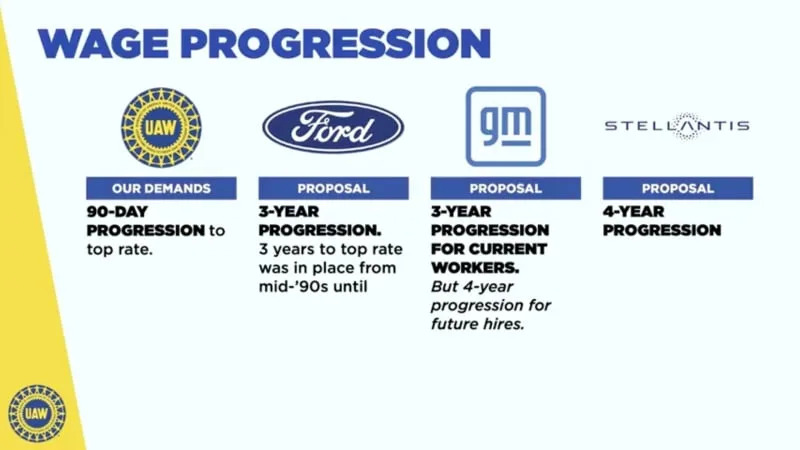
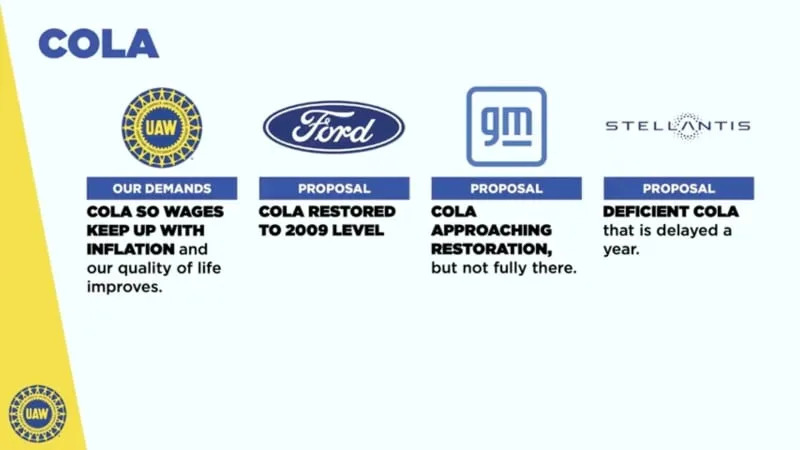
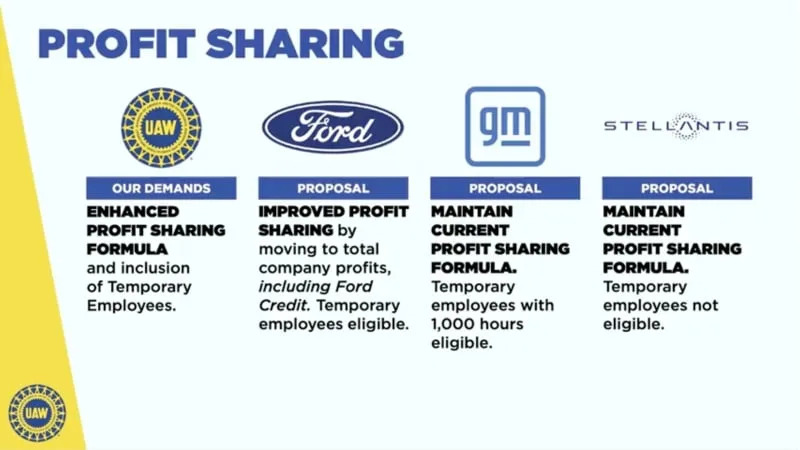

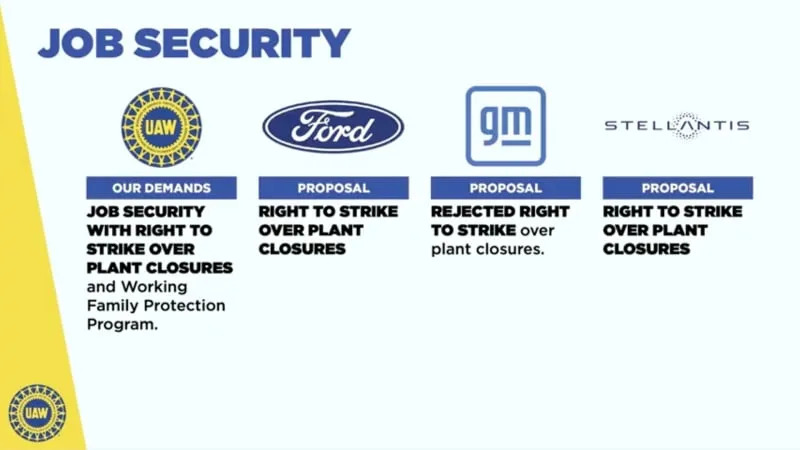
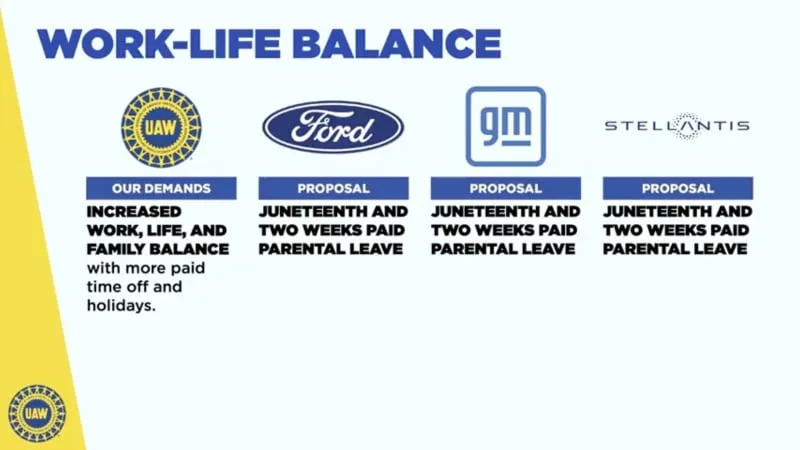
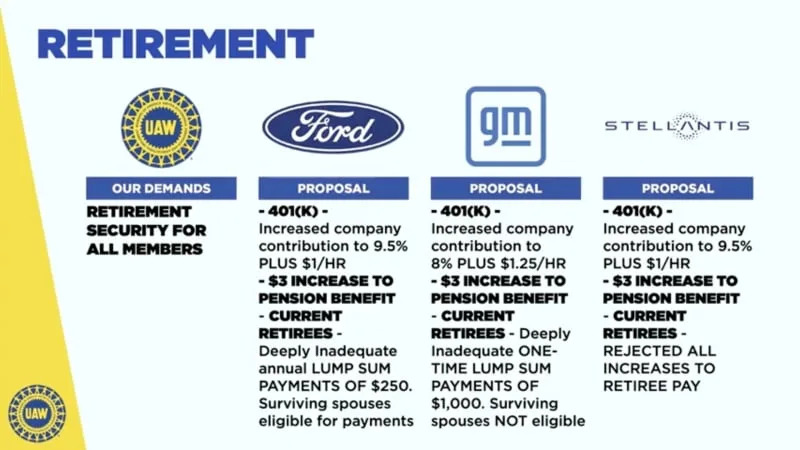
More than 34,000 union members working at the three automakers are on strike since the walkouts began on Sept. 15.
The union, waging its first simultaneous strikes against the Detroit Three automakers, opened bargaining with a demand for a 40% wage hike. The demand included a 20% immediate increase, elimination of different pay scales among UAW workers and restoration of defined benefit pension plans. The union also demand that battery plant workers be covered under union agreements.
The GM offer “suggests we may be in the endgame,” said University of California Berkeley labor professor Harley Shaiken. “In effect Ford has set the dimensions of the pattern, but GM is contributing to that. We’ve got a ways to go, but there’s clearly movement.”
Progress in talks followed the UAW’s surprise strike last week at Ford’s biggest Kentucky truck plant, which generates $25 billion in annual sales and accounts for about a sixth of the company’s worldwide automotive revenue.
Fain had described the Kentucky walkout as a warning to GM and Stellantis STLAM.MI, saying the union was ready to strike at the GM assembly plant in Arlington, Texas, that builds Cadillac Escalade, Chevy Suburban and other large, high-priced SUVs.
Ford, which has had the best offer among the three, has said it is at the limit of what it can pay and remain competitive.
But Fain said on Friday that Ford dividends shows “money is there” for a better offer.
GM said on Friday the new 23% general wage increase offer represents a 25% compounded wage rise over the life of the agreement, with a 10% hike in the first year. With cost of living increases, the offer tops 30%. GM’s previous offer was a 20% pay increase.
Also, it is now offering $21 an hour in wages for temporary workers, versus its prior offer of $20.
Ford declined to comment on GM’s offer and Stellantis had no immediate comment.
Ford hasn’t talked about the joint venture battery plants being under the master agreement yet, Shaiken said. “Clearly, GM wants to settle, but Ford feels it’s got a good pattern out there to start with.”
Rather than the hammer blow of a mass walkout that the UAW has wielded historically, the union is strategically playing the companies against each other, using reprieves from expansion of work stoppages as encouragement with different automakers.
Automakers have said union demands would significantly raise costs and hobble their electric vehicle ambitions, putting them at a disadvantage when compared to EV leader Tesla and foreign brands such as Toyota, who are non-unionized.
On Monday, Ford Executive Chairman Bill Ford warned of the growing impact to the automaker and the U.S. economy from the strike.
The total economic losses from the UAW strike have reached $7.7 billion, according to the latest data from economic consultancy Anderson Economic Group, with the Detroit Three suffering losses of $3.45 billion.
Read the full article here


